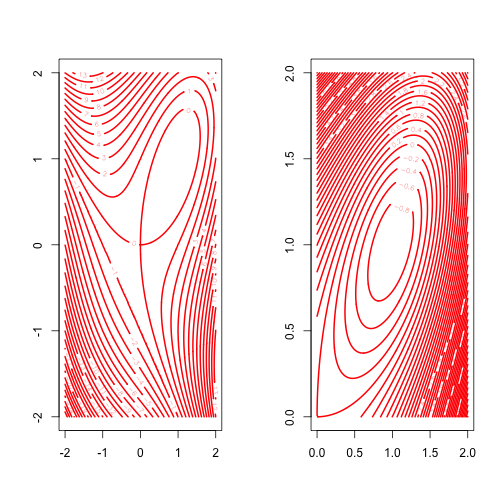I.4.3.1: The Cartesian Folium
The ``folium cartesii'' (letter of Descartes to Mersenne, August 23, 1638) is the function f:R2→R defined by f(x,y)=x3+y3−3xy.
The gradient is Df(x,y)=[3x2−3y3y2−3x], and the Hessian is D2f(x,y)=[6x−3−36y]. It follows that f(x,y) has a saddle point at (0,0) and an isolated local minimum at (1,1). These are the only two stationary points. At (0,0) the eigenvalues of the Hessian are +3 and −3, at (1,1) they are 9 and 3.
The Hessian is singular if and only if (x,y) is on the hyperbola xy=14. It is positive definite if and only if (x,y) is above the branch of the hyperbola in the positive orthant.
See Figure 1 for contour plots of sections of f on two different scales.

Now apply coordinate descent [De Leeuw, 2007b]. The minimum over x for fixed y only exists if y>0, in which case it is attained at √y. In the same way, the minimum over y for fixed x>0 is attained at √x. Thus the algorithm is simply x(k+1)=√y(k),y(k+1)=√x(k+1), and the algorithmic map is A(x,y)=[√y4√y]. The algorithm can only work if we start with y(0)>0. It then converges, linearly and monotonically, to (1,1) with convergence rate 14. If we start with y(0)≤0 then x3+(y(0))3−3xy(0) is unbounded below and thus coordinate descent fails.